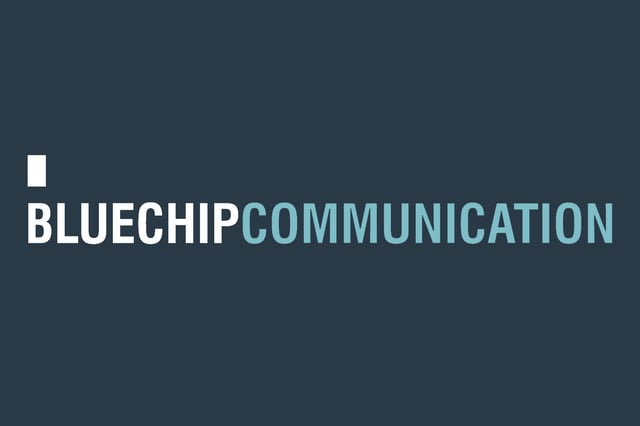
Effective communication for organisations is essential in a world of increasing connectedness and visibility. In fact, achieving it has become an increasingly higher-level accountability, which in many instances now sits at board level.
At the same time, a major pain-point for professional communicators has been how to successfully and easily demonstrate the value (effectiveness) of what we do. This is especially the case today, when communications activity carries higher stakes than ever before. (Why? Consider: multiple channels, multiple sources of potential liability – and multiple sources of opportunity.)
So the question of what is best practice when it comes to measurement and evaluation has never been a more burning one. We spoke to Barry Leggetter, Executive Director of the International Association for Measurement and Evaluation of Communication (AMEC), to find out more.
- What’s been the single biggest change in the way PR is evaluated over the last 10 years?
I think it started with the development of the Barcelona Principles framework in 2010.
When AMEC banned advertising value equivalents (AVEs) as part of the Barcelona Principles framework in 2010, I think it set into motion a new awareness and belief in the importance of measurement, which has been one of the key factors that helped the PR industry face up to its biggest challenge – its credibility as a critical business practice. When we hear “clients don’t take me seriously”, the underlying problem is often that the PR professional is not demonstrating value. In other words, they are not measuring the impact of their work. I worked in global consultancy for 30 years and I simply don’t understand why you would not want to prove that your PR program is working! It has surely got to be a key part of client satisfaction/client retention.
- AVE equivalents have become contentious for PR professionals. What’s your advice for dealing with the client who insists on using these to demonstrate value to internal stakeholders?
It’s interesting that some parts of the world, such as Europe and the US, have taken deliberate steps to move away from AVEs. It is no longer on the radar. But I do know that AVEs are still used in Asia.
One of the Barcelona Principles says that using AVEs is wrong, despite it having been a common practice for a long time. We also agreed that the common practice of inflating AVEs by a multiplier to reflect a higher value from earned versus paid media is also incorrect.
So, what’s the problem with using AVEs? AVEs are simple to use and cheap to buy. They give you a single answer, expressed in currency, of the value of the PR program. The fact that they assign the costs of buying advertising space as the value produced by PR seems to not matter to some who prefer a simple, inexpensive answer.
We then answered the question of what to replace AVEs with by creating a series of matrices that basically provide the metrics to use depending on what is the goal of the PR program. Three basic steps – set goals, pick the right metrics, measure them.
Moving away from AVEs has been helped by international PR Award schemes where the organisers have indicated a zero approach to entries which use AVEs as the only form of program measurement. It is a great use of ‘carrot and stick’ to persuade consultancies to change.
AMEC knows that even if a PR consultancy has its own measurement framework in place there will always be some clients who insist on a report based on AVEs. In today’s economic environment, no company wants to lose clients by refusing to deliver an AVE-based report.
Realistically it will take perhaps 10-15 years on a global basis. Once every PR professional in the world sees that having their work valued as the cost of advertising is a really bad idea, we will make rapid progress!
- If AVEs no longer have any currency in evaluation, how should we be measuring the impact of print coverage?
Our advice is for PR consultancies and professionals to look at AMEC’s Valid Metricsframework, which we developed to replace AVEs, and over a period of time seek to persuade clients to take your professional advice to move away from them.
We are having a lot of success working with consultancies and the Valid Metrics framework. Consultancies, including Australian members of AMEC, are developing their own version of a measurement framework based on our model.
- What percentage of a client’s PR budget should be put towards evaluation?
We recommend an allocation of between 5%-10% with best practice being 10% to 15%.
- How often should measurement and evaluation be taking place?
The program should be measured across its lifespan, e.g. if it is a product launch, measure ahead of the launch, throughout the launch and then for a period after the launch is over. If you are running an annual campaign, you will only see the true results of what your PR program has achieved if you plan to measure before the program is launched and then continue throughout the program.
- What do you think is the one thing that all PR professionals should know about measuring and evaluating social media?
That social media can be measured!
When I ran AMEC’s APAC Summit 18 months ago I saw work in social media tracking and measurement that was some of the best I have seen anywhere. That’s the good news!
In addition to confirming that AVEs were a meaningless metric, the Barcelona Principles also said that social media can and should be measured.
Since 2010 a lot of further work has been done to help the industry think about the correct way to measure social media.
With its social media group AMEC has again taken a leadership position, working in partnership with other trade bodies around the world in PR and the wider marketing community to set best practice and standards for measuring social media.
The right approach to measuring social media is to focus relentlessly on your objectives and then to measure in a manner that reflects them. Think clearly at the outset: what it is that you are looking to achieve with your social media campaign? What conversations do you want to join? What thoughts are you looking to influence? What outcomes are you looking to drive?
Think about the different objectives of each part of your social campaign and then how you might measure each in a credible manner.
As is always the case, the metrics will need to be tailored to what it is that you are trying to achieve.
What you will also see is that not all of these metrics are available from content analysis of the online conversations alone. Instead they necessitate market research, others will involve working with web analytics, and others will need you to work with your marketing or sales team to gather the date required.
Focus clearly on what success looks like to your organisation and report back in a language that everyone understands.
- What are your three top tips for best practice measurement and evaluation?
Great question – I would suggest your clients and employees look at the Top Tips section of the PR Professionals Guide to Measurement I mentioned earlier. This section has the top 3 tips from over a dozen prominent PR professionals and researchers.
I particularly like these tips from Marion McDonald, Managing Director, Strategy & Measurement, Asia Pacific Region, Ogilvy Public Relations, Hong Kong, but I recommend you to see what others say as well.
– Be PROVOCATIVE! Abandon all goals for broad coverage. Aim for the right impact only. Become obsessive about “how did this change behaviour?” not how much coverage it got. Design communications programs from the outset to drive behaviour change, not clippings.
– Speak the language of the boardroom! Always strive to link public relations to results that can be ‘banked’ (i.e. not clippings or AVE). This may be a longer term outcome (e.g. new leads to closing deals 12 months later) or corporate reputation gains that open up access to new resources or cost savings from deeper employee engagement and reduced staff turnover.
– Reserve program budget for quality impact & outcome measurement to prove business impact (especially at the expense of meaningless clipping reports.)
A 4th tip would be to join AMEC and find out what other PR consultancies are doing internationally!
The International Association for Measurement and Evaluation of Communication (AMEC) is the global trade body for communications measurement and research with members in 130 countries. For details contact barryleggetter@amecorg.com











